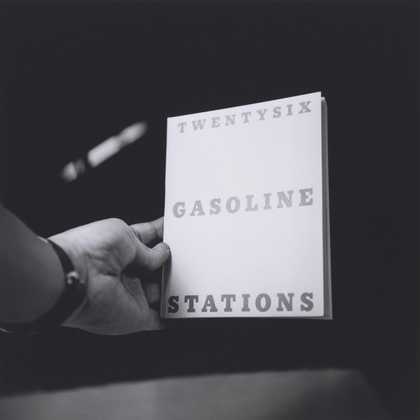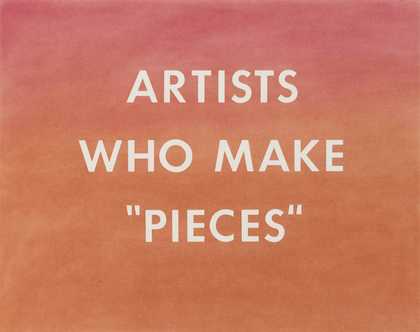
Edward Ruscha
ARTISTS WHO MAKE “PIECES” (1976)
ARTIST ROOMS Tate and National Galleries of Scotland
Ed Ruscha is widely regarded as one of the world’s most important artists with a career spanning six decades from the early 1960s until the present day.
He is best known for his series of photographs of Los Angeles and paintings featuring everyday words and phrases.
His work explores the relationship between mass media and the banality of modern urban life.
When did you first realise you wanted to be an artist?
About age 12, when I realized I didn’t have the aptitude to be a doctor.
What does it take to be an artist? I mean is it hard work?
I know what it doesn’t take to be an artist and that is the need to follow rules. It might be a struggle but you have to follow a path of your own creation.
Why do you use words as art and what made you start using text in your creations?
Words in horizontal lines are like objects lined up on a table and I’ve always liked still lifes.
Is it just words and lettering you use or do you use other symbols?
I consider any recognizable image to be a symbol and am constantly using them.
Do you prefer to work more with words than, say, objects?
This depends on my mood at the time, and sometimes I can’t even decide.
How do you select your text (what you say) and do you plan the rest of the picture before or after that?
I follow any order that I think will produce an interesting picture and it sometimes comes to me in a flash. But often the motive moves along like treacle.
Where do you get your inspiration from and what influences you?
Often I am influenced by pictures and events that I don’t like or have any interest in. These negative influences turn out to be positive.
Have you ever worked in what we would think is a more conventional way e.g. landscape, portrait, etc?
Most artists start by adapting stiff and mundane techniques, then they have to move on to a more personal vision.
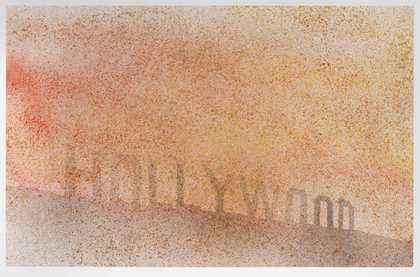
Edward Ruscha
DEC. 30th (2005)
ARTIST ROOMS Tate and National Galleries of Scotland
How often do you produce a new picture?
Sometimes every day, but there are always dry periods when nothing gets 'done'.
What techniques do you use when using pastels?
I grind down the pastel until it is a powder then rub it into the paper. This seems to be the best way to get what I think I want.
How do you make your stencilled pieces (for example, the Hollywood piece, DEC. 30th, 2005, in acrylic)?
Using stencils is a very effective way of blocking out a background or image to achieve desired results. Often you can reach surprising solutions this way.
What influenced you to make the Hollywood painting (DEC. 30th, 2005)?
To me, 'HOLLYWOOD' is large metal and wooden letters on the hillside outside my studio window. If I could not see it then the sky was overcast or smoggy. I used the sign like a weathervane and painted a portrait of the scene outside my window.
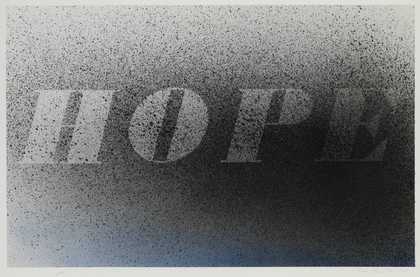
Edward Ruscha
HOPE (1998)
ARTIST ROOMS Tate and National Galleries of Scotland
What was the inspiration for the picture HOPE, 1998?
'Hope' was always a word that looked and sounded like it needed to be made into a picture.
In HOPE, 1998, is hope fading away or is it that hope is fading away the darkness?
The word can be looked at in many ways – the viewer’s interpretation can be as imaginative and resourceful as the artist who painted it.
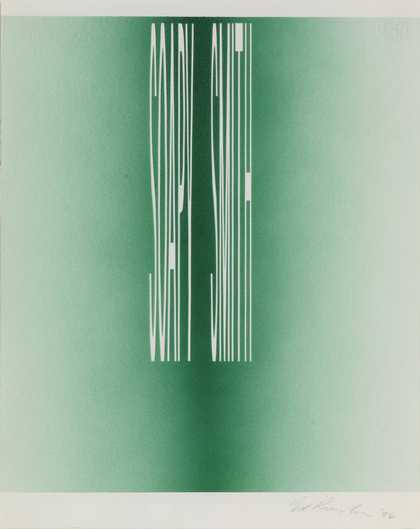
Edward Ruscha
SOAPY SMITH (1996)
ARTIST ROOMS Tate and National Galleries of Scotland
In SOAPY SMITH, 1996 why did you choose to make the words unreadable?
'SOAPY SMITH' is almost unreadable but not completely. You have to put your nose at the bottom of the long, skinny letters and they will be completely legible.
Which of your pieces are you most proud of, and why?
Any picture that makes me smile because I get a very unclear, but distinct, feeling of achievement.
What is your favourite word?
'So'
The ARTIST ROOMS collection holds a remarkable survey of Ruscha’s work dating between 1962 and 2010, including an important group of drawings, photograph portfolios and several key paintings.

